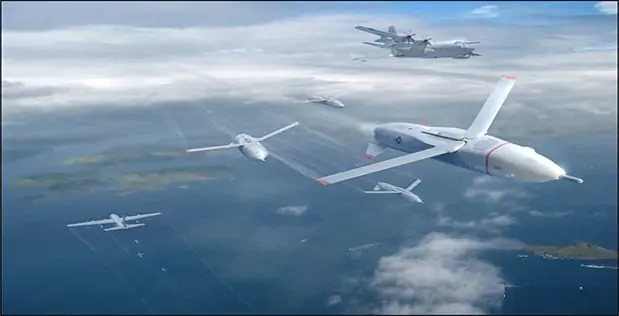
DARPA has announced that it has awarded Phase 2 contracts for its Gremlins program to two teams, one led by Dynetics, Inc. and the other by General Atomics Aeronautical Systems. The agency recently completed Phase 1 of the program, which envisions volleys of low-cost, reusable unmanned aerial systems (UASs) — or “gremlins” — that could be launched and later retrieved in mid-air.
“The Phase 1 program showed the feasibility of airborne UAS launch and recovery systems that would require minimal modification to the host aircraft,” said Scott Wierzbanowski, DARPA program manager. “We’re aiming in Phase 2 to mature two system concepts to enable ‘aircraft carriers in the sky’ using air-recoverable UASs that could carry various payloads—advances that would greatly extend the range, flexibility, and affordability of UAS operations for the U.S. military.”
Gremlins Phase 2 research seeks to complete preliminary designs for full-scale technology demonstration systems, as well as develop and perform risk-reduction tests of individual system components. Phase 3 goals include developing one full-scale technology demonstration system and conducting flight demonstrations involving airborne launch and recovery of multiple gremlins. Flight tests are currently scheduled for the 2019 timeframe.
Named for the imaginary, mischievous imps that became the good luck charms of many British pilots during World War II, the program envisions launching groups of UASs from multiple types of military aircraft—including bombers, transport, fighters, and small, unmanned fixed-wing platforms — while out of range of adversary defenses. When the gremlins complete their mission, a C-130 transport aircraft would retrieve them in the air and carry them home, where ground crews would prepare them for their next use within 24 hours.
The gremlins’ expected lifetime of about 20 uses could provide significant cost advantages over expendable unmanned systems by reducing payload and airframe costs and by having lower mission and maintenance costs than conventional manned platforms.


















